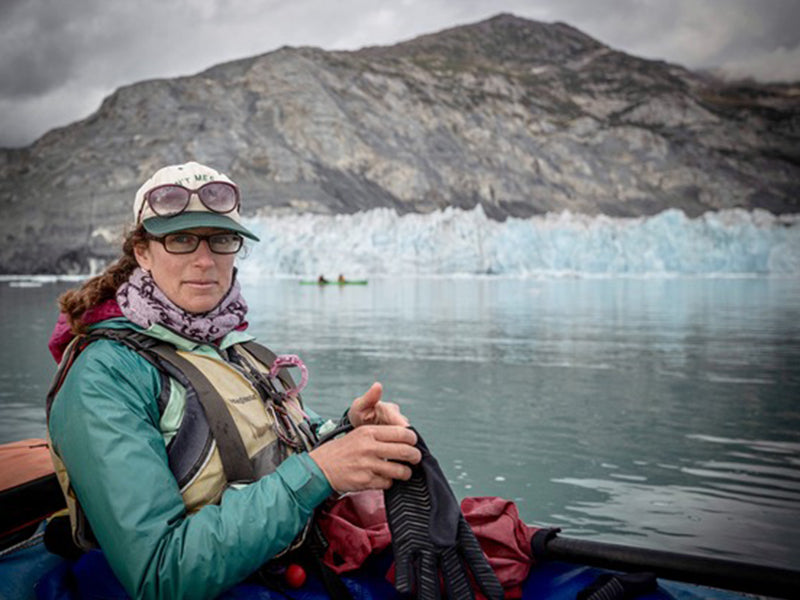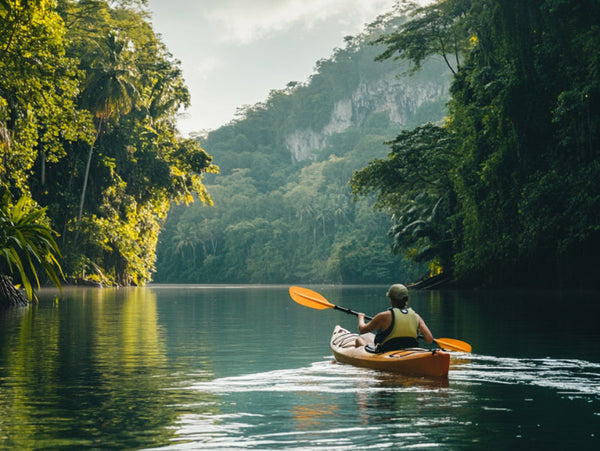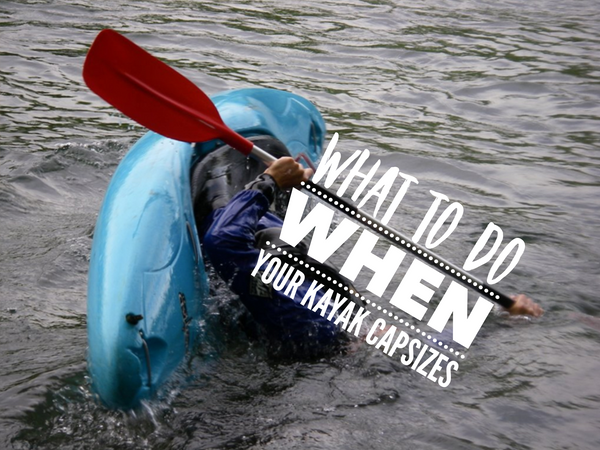Kayaking Around Ice To Discover Emotional Freedom

Sea kayaking has been a huge part of my life for about 10 years. In fact, it’s my livelihood. I spend summers guiding in Prince William Sound, Alaska, and winters guiding in Panama. Much of my existence revolves around paddling. Many of my best friends are also kayakers and it is an activity that I have dedicated a lot of love, passion, and thought.
There are many angles that I can take regarding how kayaking can positively impact our lives and enhance our well-being. I believe that kayaking can make us better human beings. How does that look for me? I want to share how paddling specifically in Alaska around icebergs has affected my mental/emotional health and ability to go through life with more grace, non-attachment, and joy, especially through difficult times.

Icebergs are one of the most beautiful things in this world, and one of my favorite parts of paddling in Alaska. There is ice everywhere, even in the warmer months of summer. I’ve spent countless hours marveling that ice can take such diverse form, size, color, and density. . . each piece unique in its stage of life and movement. I love to observe the different sounds that emerge from ice: popping, hissing, sizzling, and groaning. I’ve sat in a kayak and watched icebergs the size of an apartment building split in half and roll around seeking equilibrium, water and ice cascading and spraying into the air.

I look to ice as a great teacher, offering a sense of freedom, as well as pacifying turbulent times in life. Contemplating the transient nature of ice teaches me to approach life in the same way, especially uncomfortable situations. Ice is in a constant state of transformation, melting and freezing, breaking apart and floating away. No piece of ice will ever exist again in that same way. This sentiment is extremely liberating, as it can be applied to all feelings and thoughts, which we know can be quite terrorizing and overwhelming. Whether it’s sadness, anger or even ecstatic happiness that I’m experiencing I look to the ice and a sense of tranquility immediately passes over me. It will pass. Whatever it is. . . It will pass. There is nothing to hold on to, just as the ice does not struggle to hold on to the water that comprises it nor the ocean in which it’s floating.
I’d like to share an excerpt from my journal on October 15, 2016, the day that I left Alaska after my fifth season kayaking in Prince William Sound.
. . . All of these natural wonders take away the clutter in my mind. . . teach me the value of letting go of what does not matter in life, and to cherish what does, which is the present moment, love, compassion, and gratitude. Somehow these wonders are teachers. Somehow a floating chunk of ice teaches me that nothing ever stays the same. . . everything is constantly in a state of transformation; thoughts, feelings, and emotions included. I learn to let go of all of them, watch them pass by as I watch floating ice pass by, never to be experienced quite the same way again. Just like the ice I will watch millions of thoughts go by, and I must let go of each and every one of them. It is a struggle, for sure. Yet, does the ice struggle? I think not!
Leave a comment
Comments will be approved before showing up.
Also in Blog

How to Choose the Right Kayak Anchor
Choosing the right kayak anchor can make all the difference when it comes to staying steady on the water. This guide walks you through everything you need to know about selecting the perfect folding kayak anchor

What To Do When Your Kayak Capsizes
Although kayaks are designed for stability no matter the conditions, accidents happen and knowing what to do can help you avoid an unpleasant experience. Preparedness and technique are key components to controlling a sometimes scary situation.


